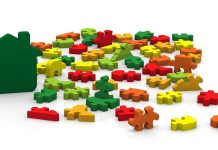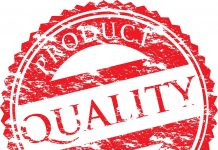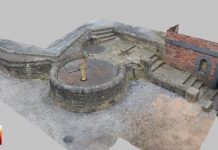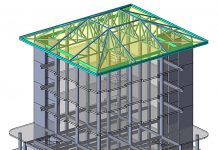Justin Anderson, CEO of Flexeye, talks about the vital role of the Internet of Things, including the HyperCat standard, in delivering the vision and benefits set out in the UK’s Digital Built Britain strategy
The public and private sector initiative to create a Digital Built Britain has the potential to deliver £billions in efficiencies for the construction and facilities management industries. As the UK government’s strategic plan for Level 3 Building Information Modelling (BIM) recognises, Smart City and Internet of Things (IoT) technologies have a key role to play.
The UK has a fast-accelerating approach to making its cities smarter, to deliver improved services at lower cost. The government is actively backing smart cities, including through Innovate UK funded competitions. Together with strong local leadership this has kick-started projects across multiple cities, including Glasgow, Bristol, London and Milton Keynes to name just a few examples.
These initiatives are driving innovation, creating growth and local employment opportunities. There is also strong export potential. The Department for Business Innovation and Skills (BIS) has estimated that there is a >$400 billion global market for smart city services. Moreover, the built environment will be a large and integral part of smart cities, creating opportunities across civil engineering, architectural, construction and buildings services industries.
Smart cities and the IoT are also integrally linked. The Internet of Things combines the intelligence from everyday connected objects (from streetlights to smoke alarms) to provide insight and improved services – all of which will be part of making cities smarter and better.
The value of interoperability
To really succeed, we need to take an open and collaborative approach to the IoT and smart cities right from the start – one that involves citizens, local and central government, as well as large and small businesses. This begins with shaping and procuring infrastructure and services that can deliver benefits for all, with the flexibility to evolve over time.
Collaboration needs to extend into the operation of assets and services. This is highly consistent with the goals for BIM Level 3, which will ensure that the 3D models and intelligence created in design and construction can be fully leveraged by building and facilities management teams.
To be efficient and effective, these operational teams need to combine the intelligence from a multitude of connected devices or “things”. These things need to be able to talk to each other in real-time – in other words they need to be “interoperable”.
That’s where HyperCat come in. HyperCat is focused on making data from a connected thing or device discoverable, searchable and addressable. This addresses two of the central challenges of the rapidly evolving Internet of Things: firstly, how to find relevant and trustworthy data from connected “things”; and secondly how to make it easier for those things to talk to each other. The HyperCat standard is intentionally brief and will be accessible to all – encouraging wide-scale adoption. It is funded by the UK government, through Innovate UK and is already backed by around 600 organisations from academia and the public sector to SMEs and international companies. HyperCat 2.0 – the first version that will be widely shared for all to use – is currently going through a BSI/PAS certification process.
There is a reason why so many businesses are interested. While it may sound like a dry technical issue, solving the interoperability challenge has the potential to unlock $trillions in value worldwide.
Indeed, a recent McKinsey report estimated that this interoperability is essential to unlock 40% of the $11trillion estimated future value of the IoT.
What does this mean for a Digital Built Britain?
The HyperCat standard is already being implemented today, in buildings and across the wider built environment through a set of vertical “spearheads”. This includes two spearheads related to asset management and tracking in buildings, one related to highways infrastructure and a host of other smart city related applications.
We expect that the wide interest in HyperCat will see a rapid expansion in its adoption beyond the spearheads, including across smart buildings and cities. This should very much be seen as complementary to the evolution of BIM. For example, HyperCat can refer to existing catalogues of data – which could include the libraries and classifications that will be created under BIM Level 3.
HyperCat has now gone a step further with the creation of “HyperCatCity”, which is bringing together public and private sector organisations to jointly address specific smart city challenges and opportunities. The group are already talking with several UK cities, and working with the government on some potential large-scale international projects.
The HyperCat standard itself will also stimulate interoperability and foster collaboration way beyond buildings related industries, helping to increase the benefits throughout the built environment. For example, HyperCat, together with specifications from industry bodies such as the Open Interconnect Consortium and the Industrial Internet Consortium (IIC), are driving greater interoperability between the devices that will be installed in buildings, on “street furniture” and across transport infrastructure.
This means that building managers, along with the operators of infrastructure in the built environment will be able to combine the real-time intelligence from a wide variety of different sensors and then effect real-time changes using actuating (control) devices. To give just one instance, buses could be re-routed in real-time to reflect crowdsourced passenger data (or pick-up requests), local air quality, smart parking and road repairs.
Historical data from IoT devices will also be highly valuable to inform the future design of smarter, greener buildings. This includes providing a granular view of the energy efficiency and Indoor Environmental Quality (IEQ) performance of buildings. The importance of IoT was recognised in a recent World Green Building Council Report, “Health, Wellbeing and Productivity in Offices: The next chapter for green building” . The same report recognises that greener, smarter building – incorporating IoT technology – can lead to significant improvements in employee productivity, wellbeing and financial performance.
Internet of Things interoperability will play a big role in maximising the value from a Digital Built Britain, increasing the benefits to citizens, the public sector, infrastructure operators and businesses. The HyperCat standard is highly complementary to BIM Level 3. We’re already seeing some great involvement from major engineering and facilities management companies and we’re looking forward to this really taking off in the near future.
Justin Anderson
CEO
Flexeye
Tel: 01483 306060
questions_uk@flexeye.com













